- What Nigerians can learn from the American angle
Nigerian adolescents, just like their American counterparts, watch much more pornography than their parents know — and it’s shaping their ideas about pleasure, power and intimacy. Can they be taught to see it more critically?
Drew was 8 years old when he was flipping through TV channels at home and landed on “Girls Gone Wild.” A few years later, he came across HBO’s late-night soft-core pornography. Then in ninth grade, he found online porn sites on his phone. The videos were good for getting off, he said, but also sources for ideas for future sex positions with future girlfriends. From porn, he learned that guys need to be buff and dominant in bed, doing things like flipping girls over on their stomach during sex. Girls moan a lot and are turned on by pretty much everything a confident guy does. One particular porn scene stuck with him: A woman was bored by a man who approached sex gently but became ecstatic with a far more aggressive guy.
But around 10th grade, it began bothering Drew, an honor-roll student who loves baseball and writing rap lyrics and still confides in his mom, that porn influenced how he thought about girls at school. Were their breasts, he wondered, like the ones in porn? Would girls look at him the way women do in porn when they had sex? Would they give him blow jobs and do the other stuff he saw?
Drew, who asked me to use one of his nicknames, was a junior when I first met him in late 2016, and he told me some of this one Thursday afternoon, as we sat in a small conference room with several other high school boys, eating chips and drinking soda and waiting for an after-school program to begin. Next to Drew was Q., who asked me to identify him by the first initial of his nickname. He was 15, a good student and a baseball fan, too, and pretty perplexed about how porn translated into real life. Q. hadn’t had sex — he liked older, out-of-reach girls, and the last time he had a girlfriend was in sixth grade, and they just fooled around a bit. So he wasn’t exactly in a good position to ask girls directly what they liked. But as he told me over several conversations, it wasn’t just porn but rough images on Snapchat, Facebook and other social media that confused him. Like the GIF he saw of a man pushing a woman against a wall with a girl commenting: “I want a guy like this.” And the one Drew mentioned of the “pain room” in “Fifty Shades of Grey” with a caption by a girl: “This is awesome!”
Watching porn also heightened Q.’s performance anxiety. “You are looking at an adult,” he told me. “The guys are built and dominant and have a big penis, and they last a long time.” And if you don’t do it like the guys in porn, Drew added, “you fear she’s not going to like you.”
Leaning back in his chair, Drew said some girls acted as if they wanted some thug rather than a smart, sensitive guy. But was it true desire? Was it posturing? Was it what girls thought they were supposed to want? Neither Q. nor Drew knew. A couple of seats away, a sophomore who had been quiet until then added that maybe the girls didn’t know either. “I think social media makes girls think they want something,” he said, noting he hadn’t seen porn more than a handful of times and disliked it. “But I think some of the girls are afraid.”
“It gets in your head,” Q. said. “If this girl wants it, then maybe the majority of girls want it.” He’d heard about the importance of consent in sex, but it felt pretty abstract, and it didn’t seem as if it would always be realistic in the heat of the moment. Out of nowhere was he supposed to say: Can I pull your hair? Or could he try something and see how a girl responded? He knew that there were certain things — “big things, like sex toys or anal” — that he would not try without asking.
“I would just do it,” said another boy, in jeans and a sweatshirt. When I asked what he meant, he said anal sex. He assumed that girls like it, because the women in porn do.
“I would never do something that looked uncomfortable,” Drew said, jumping back into the conversation. “I might say, ‘I’ve seen this in porn — do you want to try it?’ ”
It was almost 4 p.m., and the boys started to gather their backpacks to head to a class known as Porn Literacy. The course, with the official title The Truth About Pornography: A Pornography-Literacy Curriculum for High School Students Designed to Reduce Sexual and Dating Violence, is a recent addition to Start Strong, a peer-leadership program for teenagers headquartered in Boston’s South End and funded by the city’s public-health agency. About two dozen selected high school students attend every year, most of them black or Latino, along with a few Asian students, from Boston public high schools, including the city’s competitive exam schools, and a couple of parochial schools. During most of the year, the teenagers learn about healthy relationships, dating violence and L.G.B.T. issues, often through group discussions, role-playing and other exercises.
But for around two hours each week, for five weeks, the students — sophomores, juniors and seniors — take part in Porn Literacy, which aims to make them savvier, more critical consumers of porn by examining how gender, sexuality, aggression, consent, race, queer sex, relationships and body images are portrayed (or, in the case of consent, not portrayed) in porn.
On average, boys are around 13, and girls are around 14, when they first see pornography, says Bryant Paul, an associate professor at Indiana University’s Media School and the author of studies on porn content and adolescent and adult viewing habits. In a 2008 University of New Hampshire survey, 93 percent of male college students and 62 percent of female students said they saw online porn before they were 18. Many females, in particular, weren’t seeking it out. Thirty-five percent of males said they had watched it 10 or more times during adolescence.
Porn Literacy, which began in 2016 and is the focus of a pilot study, was created in part by Emily Rothman, an associate professor at Boston University’s School of Public Health who has conducted several studies on dating violence, as well as on porn use by adolescents. She told me that the curriculum isn’t designed to scare kids into believing porn is addictive, or that it will ruin their lives and relationships and warp their libidos. Instead it is grounded in the reality that most adolescents do see porn and takes the approach that teaching them to analyze its messages is far more effective than simply wishing our children could live in a porn-free world.
Imagine that you are a 14-year-old today. A friend might show you a short porn clip on his phone during the bus ride to school or after soccer practice. A pornographic GIF appears on Snapchat. Or you mistype the word “fishing” and end up with a bunch of links to “fisting” videos. Like most 14-year-olds, you haven’t had sex, but you’re curious, so maybe you start searching and land on one of the many porn sites that work much like YouTube — XVideos.com, Xnxx.com, BongaCams.com, all of them among the 100 most-frequented websites in the world, according to Alexa Top Sites. Or you find Pornhub, the most popular of the group, with 80 million visitors a day and more traffic than Pinterest, Tumblr or PayPal. The mainstream websites aren’t verifying your age, and your phone allows you to watch porn away from the scrutinizing eyes of adults. If you still have parental-control filters, you probably have ways around them.
Besides, there’s a decent chance your parents don’t think you are watching porn. Preliminary analysis of data from a 2016 Indiana University survey of more than 600 pairs of children and their parents reveals a parental naïveté gap: Half as many parents thought their 14- and 18-year-olds had seen porn as had in fact watched it. And depending on the sex act, parents underestimated what their kids saw by as much as 10 times.
What teenagers see on Pornhub depends partly on algorithms and the clips they’ve clicked on in the past. Along with stacks of videos on the opening page, there are several dozen categories (“teen,” “anal,” “blonde,” “girl on girl,” “ebony,” “milf”) that can take them to more than six million videos. The clips tend to be short, low on production value, free and, though Pornhub tries to prevent it, sometimes pirated from paid sites. Many of the heterosexual videos are shot from the male point of view, as if the man were holding the camera while he has sex with a woman whose main job, via oral sex, intercourse or anal sex, is to make him orgasm. Plot lines are thin to nonexistent as the camera zooms in for up-close shots of genitals and penetration that are repetitive, pounding and — though perhaps not through the eyes of a 14-year-old — banal. (There are alternative narratives in L.G.B.T. and feminist porn, and studies show that for gay and bisexual youth, porn can provide affirmation that they are not alone in their sexual desires.)
We don’t have many specifics on what kids actually view, in large part because it’s extremely difficult to get federal funding for research on children and pornography. A few years ago, frustrated by the dearth of large, recent United States studies, Rashida Jones, Jill Bauer and Ronna Gradus, creators of the 2017 Netflix documentary series “Hot Girls Wanted: Turned On,” about technology and porn, paired with several foundations and philanthropists to fund a national survey about porn viewing, sexual attitudes and behaviors. As part of the survey, led by Debby Herbenick, a professor at the Indiana University School of Public Health and director of the university’s Center for Sexual Health Promotion, along with her colleague Bryant Paul, 614 teenagers ages 14 to 18 reported what their experiences were with porn. In preliminary data analysis from the study (Herbenick is submitting an academic paper for publication this year), of the roughly 300 who did watch porn, one-quarter of the girls and 36 percent of the boys said they had seen videos of men ejaculating on women’s faces (known as “facials”), Paul says. Almost one-third of both sexes saw B.D.S.M. (bondage, domination, sadism, masochism), and 26 percent of males and 20 percent of females watched videos with double penetration, described in the study as one or more penises or objects in a woman’s anus and/or in her vagina. Also, 31 percent of boys said they had seen “gang bangs,” or group sex, and “rough oral sex” (a man aggressively thrusting his penis in and out of a mouth); less than half as many girls had.
It’s hard to know if, and how, this translates into behavior. While some studies show that a small number of teenagers who watch higher rates of porn engage in earlier sex, as well as in gender stereotyping and in sexual relationships that are less affectionate than their peers’, these findings only indicate correlations, not cause and effect. But surveys do suggest that the kinds of sex some teenagers have may be shifting. The percentage of 18-to-24-year-old women who reported trying anal sex rose to 40 percent in 2009 from 16 percent in 1992, according to the largest survey on American sexual behavior in decades, co-authored by Herbenick and published in The Journal of Sexual Medicine. In data from that same survey, 20 percent of 18-to-19 year old females had tried anal sex; about 6 percent of 14-to-17-year-old females had. And in a 2016 Swedish study of nearly 400 16-year-old girls, the percentage of girls who had tried anal sex doubled if they watched pornography. Like other studies about sex and porn, it only showed a correlation, and girls who are more sexually curious may also be drawn to porn. In addition, some girls may view anal sex as a “safer” alternative to vaginal sex, as there’s little risk of pregnancy.
The Indiana University national survey of teenagers asked about other sex behaviors as well. Though the data have not been fully analyzed, preliminary findings suggest that of the teenagers who had had sex, around one-sixth of boys said they had ejaculated on someone’s face or choked a sex partner. The survey didn’t define choking, but the high school and college-age students I spoke to referred to it as anything from placing a hand gently on a partner’s neck to squeezing it.
We don’t have longitudinal data on the frequency of ejaculating on a girl’s face or choking among American teenagers to know whether either practice is more common now. And, as David Finkelhor, director of the Crimes Against Children Research Center at the University of New Hampshire, told me, fewer teenagers have early sex than in the past (in a recent study, 24 percent of American ninth graders had sex; in 1995 about 37 percent had), and arrests of teenagers for sexual assault are also down. But you don’t have to believe that porn leads to sexual assault or that it’s creating a generation of brutal men to wonder how it helps shape how teenagers talk and think about sex and, by extension, their ideas about masculinity, femininity, intimacy and power.
Over the year in which I spoke to dozens of older teenagers at Start Strong and around the country, many said that both porn and mainstream media — everything from the TV show “Family Guy” (which references choking and anal sex) to Nicki Minaj’s song “Truffle Butter” (with an apparent allusion to anal sex followed by vaginal sex) to the lyrics in Rihanna’s “S&M” (“Sticks and stones may break my bones, but chains and whips excite me”) — made anal and rough sex seem almost commonplace. Drew told me he got the sense that girls wanted to be dominated not only from reading a few pages of “Fifty Shades of Grey” but also from watching the movie “Mr. & Mrs. Smith,” with Brad Pitt and Angelina Jolie. “She’s on the table, and she’s getting pounded by him. That’s all I’ve seen growing up.”
These images confound many teenagers about the kinds of sex they want or think they should have. In part, that’s because they aren’t always sure what is fake and what is real in porn. Though some told me that porn was fantasy or exaggerated, others said that porn wasn’t real only insofar as it wasn’t typically two lovers having sex on film. Some of those same teenagers assumed the portrayal of how sex and pleasure worked was largely accurate. That seems to be in keeping with a 2016 survey of 1,001 11-to-16-year-olds in Britain. Of the roughly half who had seen pornography, 53 percent of boys and 39 percent of girls said it was “realistic.” And in the recent Indiana University national survey, only one in six boys and one in four girls believed that women in online porn were not actually experiencing pleasure: As one suburban high school senior boy told me recently, “I’ve never seen a girl in porn who doesn’t look like she’s having a good time.”
It’s not surprising, then, that some adolescents use porn as a how-to guide. In a study that Rothman carried out in 2016 of 72 high schoolers ages 16 and 17, teenagers reported that porn was their primary source for information about sex — more than friends, siblings, schools or parents.
“There’s nowhere else to learn about sex,” the suburban boy told me. “And porn stars know what they are doing.” His words reflect a paradox about sex and pornography in this country. Even as smartphones have made it easier for teenagers to watch porn, sex education in the United States — where abstinence-based sex education remains the norm — is meager. Massachusetts is among 26 states that do not mandate sex ed. And a mere 13 require that the material be medically and scientifically accurate. After some gains by the Obama administration to promote more comprehensive sex ed, which includes pregnancy prevention, discussions of anatomy, birth control, disease prevention, abstinence and healthy relationships, the Trump administration did not include the program in its proposed 2018 budget; it also has requested increased funding for abstinence education. Easy-to-access online porn fills the vacuum, making porn the de facto sex educator for American youth.
One Thursday afternoon, about a dozen teenagers sat in a semicircle of North Face zip-ups, Jordans, combat boots, big hoop earrings and the slumped shoulders of late afternoon. It was the third week of Porn Literacy, and everyone already knew the rules: You don’t have to have watched porn to attend; no yucking someone else’s yum — no disparaging a student’s sexual tastes or sexuality. And avoid sharing personal stories about sex in class. Nicole Daley and Jess Alder, who wrote the curriculum with Emily Rothman and led most of the exercises and discussion, are in their 30s, warm and easygoing. Daley, who until last month was the director of Start Strong, played the slightly more serious favorite-aunt role, while Alder, who runs Start Strong’s classes for teenagers, was the goofier, ask-me-anything big sister. Rothman also attended most of the classes, offering information about pornography studies and explaining to them, for example, that there is no scientific evidence that porn is addictive, but that people can become compulsive about it.
In the first class, Daley led an exercise in which the group defined porn terms (B.D.S.M., kink, soft-core, hard-core), so that, as she put it, “everyone is on the same page” and “you can avoid clicking on things you don’t want to see.” The students also “values voted” — agreeing or disagreeing about whether the legal viewing age of 18 for porn is too high, if working in the porn industry is a good way to make money and if pornography should be illegal. Later, Daley held up images of a 1940s pinup girl, a Japanese geisha and Kim Kardashian, to talk about how cultural values about beauty and bodies change over time. In future classes, they would talk about types of intimacy not depicted in porn and nonsexist pickup lines. Finally, Daley would offer a lesson about sexting and sexting laws and the risks of so-called revenge porn (in which, say, a teenager circulates a naked selfie of an ex without consent). And to the teenagers’ surprise, they learned that receiving or sending consensual naked photos, even to your boyfriend or girlfriend, can be against the law if the person in the photo is a minor.
Now, in the third week of class, Daley’s goal was to undercut porn’s allure for teenagers by exposing the underbelly of the business. “When you understand it’s not just two people on the screen but an industry,” she told me, “it’s not as sexy.”
To that end, Daley started class by detailing a midlevel female performer’s salary (taken from the 2008 documentary “The Price of Pleasure”): “Blow job: $300,” Daley read from a list. “Anal: $1,000. Double penetration: $1,200. Gang bang: $1,300 for three guys. $100 for each additional guy.”
“Wow,” Drew muttered. “That makes it nasty now.”
“That’s nothing for being penetrated on camera,” another boy said.
Then, as if they had been given a green light to ask about a world that grown-ups rarely acknowledge, they began peppering Daley, Rothman and Alder with questions.
“How much do men get paid?” one girl asked. It is the one of the few professions in which men are paid less, Rothman explained, but they also typically have longer careers. How long do women stay in their jobs? On average, six to 18 months. How do guys get erections if they aren’t turned on? Often Viagra, Rothman offered, and sometimes a “fluffer,” as an offscreen human stimulator is known.
Daley then asked the teenagers to pretend they were contestants on a reality-TV show, in which they had to decide if they were willing to participate in certain challenges (your parents might be watching) and for how much money. In one scenario, she said, you would kneel on the ground while someone poured a goopy substance over your face. In another, you’d lick a spoon that had touched fecal matter. The kids debated the fecal-matter challenge — most wouldn’t to do it for less than $2 million. One wanted to know if the goop smelled. “Can we find out what it is?” asked another.
Then Daley explained that each was in fact a simulation of a porn act. The goopy substance was what’s called a “baker’s dozen,” in which 13 men ejaculate on a woman’s face, breasts and mouth.
“What?” a girl named Tiffany protested.
The second scenario — licking the spoon with fecal matter — was from a porn act known as A.T.M., in which a man puts his penis in a woman’s anus and then immediately follows by sticking it in her mouth.
“No way,” a 15-year-old boy said. “Can’t you wash in between?”
Nope, Daley said.
“We don’t question it when we see it in porn, right?” Daley went on. “There’s no judgment here, but some of you guys are squeamish about it.”
“I never knew any of this,” Drew said, sounding a bit glum.
Daley went on to detail a 2010 study that coded incidents of aggression in best-selling 2004 and 2005 porn videos. She noted that 88 percent of scenes showed verbal or physical aggression, mostly spanking, slapping and gagging. (A more recent content analysis of more than 6,000 mainstream online heterosexual porn scenes by Bryant Paul and his colleagues defined aggression specifically as any purposeful action appearing to cause physical or psychological harm to another person and found that 33 percent of scenes met that criteria. In each study, women were on the receiving end of the aggression more than 90 percent of the time.)
“Do you think,” Daley said, standing in front of the students, “watching porn leads to violence against women? There’s no right or wrong here. It’s a debate.”
Kyrah, a 10th-grade feminist with an athlete’s compact body and a tendency to speak her opinions, didn’t hesitate. “In porn they glamorize calling women a slut or a whore, and younger kids think this is how it is. Or when they have those weird porn scenes and the woman is saying, ‘Stop touching me,’ and then she ends up enjoying it!”
Tiffany, her best friend, snapped her fingers in approval.
“Yes and no,” one guy interjected. “When a man is choking a woman in porn, people know it is not real, and they aren’t supposed to do it, because it’s violence.” He was the same teenager who told me he would just “do” anal sex without asking a girl, because the women in porn like it.
Pornography didn’t create the narrative that male pleasure should be first and foremost. But that idea is certainly reinforced by “a male-dominated porn industry shot through a male lens,” as Cindy Gallop puts it. Gallop is the creator of an online platform called MakeLoveNotPorn, where users can submit videos of their sexual encounters — which she describes as “real world,” consensual sex with “good values” — and pay to watch videos of others.
For years, Gallop has been a one-woman laboratory witnessing how easy-to-access mainstream porn influences sex. Now in her 50s, she has spent more than a decade dating 20-something men. She finds them through “cougar” dating sites — where older women connect with younger men — and her main criterion is that they are “nice.” Even so, she told me, during sex with these significantly younger nice men, she repeatedly encounters porn memes: facials, “jackhammering” intercourse, more frequent requests for anal sex and men who seem less focused on female orgasms than men were when she was younger. Gallop takes it upon herself to “re-educate,” as she half-jokingly puts it, men raised on porn. Some people, of course, do enjoy these acts. But speaking of teenagers in particular, she told me she worries that hard-core porn leads many girls to think, for example, that “all boys love coming on girls’ faces, and all girls love having their faces come on. And therefore, girls feel they must let boys come on their face and pretend to like it.”
Though none of the boys I spoke to at Start Strong told me they had ejaculated on a girl’s face, Gallop’s words reminded me of conversations I had with some older high-schoolers in various cities. One senior said that ejaculating on a woman’s face was in a majority of porn scenes he had watched, and that he had done it with a girlfriend. “I brought it up, or she would say, ‘Come on my face.’ It was an aspect I liked — and she did, too.”
Another noted that the act is “talked about a lot” among guys, but said that “a girl’s got to be down with it” before he’d ever consider doing it. “There is something that’s appealing for guys. The dominance and intimacy and that whole opportunity for eye contact. Guys are obsessed with their come displayed on a girl.”
Many girls at Start Strong were decidedly less enthusiastic. One senior told me a boyfriend asked to ejaculate on her face; she said no. And during a conversation I had with three girls, one senior wondered aloud: “What if you don’t want a facial? What are you supposed to do? Friends say a boy cleans it with a napkin. A lot of girls my age like facials.” But a few moments later, she reversed course. “I actually don’t think they like it. They do it because their partner likes it.” Next to her, a sophomore added that when older girls talk among themselves, many say it’s gross. “But they say you gotta do what you gotta do.” And if you don’t, the first girl added, “then someone else will.”
These are not new power dynamics between girls and boys. In a 2014 British study about anal sex and teenagers, girls expressed a similar lack of sexual agency and experienced physical pain. In the survey, of 130 heterosexual teenagers age 16 to 18, teenagers often said they believed porn was a motivating factor for why males wanted anal sex. And among the guys who reported trying it, many said friends encouraged them, or they felt competitive with other guys to do it. At the same time, a majority of girls who had tried anal sex said they didn’t actually want to; their partners persuaded or coerced them. Some males took a “try it and see” approach, as researchers called it, attempting to put their finger or penis in a girl’s anus and hoping she didn’t stop them. Sometimes, one teenager reported, you “just keep going till they just get fed up and let you do it anyway.” Both boys and girls blamed the girls for pain they felt during anal sex and some told researchers the girls needed to “relax” more or “get used to it.” Only one girl said she enjoyed it, and only a few boys did. Teenagers may not know that even while porn makes it seem commonplace, in the 2009 national survey of American sex habits, most men and women who tried anal sex didn’t make it a regular part of their sex lives. And in another study, by Indiana University’s Debby Herbenick and others in 2015, about 70 percent of women who had anal sex said they experienced pain.
Drew had firsthand experience with what he had seen in porn not translating into actual pleasure. The first time he had sex, he thought he was supposed to exert some physical control over his girlfriend. But the whole thing felt awkward, too rough and not all that fun. And things that looked easy in porn, like sex while taking a shower or mutual oral sex, didn’t go so well.
At one point during sex, Drew’s girlfriend at the time, who was a year older and more experienced, asked him to put his hand around her neck during sex. He did it, without squeezing, and though it didn’t exactly bother him, it felt uncomfortable. Drew never asked if she got the idea from porn, but it made him wonder. Had she also picked up other ways of acting? “Like, how do you really know a girl has had a good time?” he said one afternoon, musing aloud while sitting with some friends before Porn Literacy class. “My girlfriend said she had a good time,” he went on. “She was moaning. But that’s the thing: Is it fake moaning?”
Even if you know porn isn’t realistic, it still sets up expectations, one senior told me. In porn, he said, “the clothes are off, and the girl goes down on the guy, he gets hard and he starts having sex with her. It’s all very simple and well lit.” Before he had sex, porn had supplied his images of oral sex, including scenes in which a woman is on her knees as a man stands over her. At one point, he thought that’s how it might go one day when he had sex. But when he talked with his girlfriend, they realized they didn’t want to re-enact that power dynamic.
I spent a couple of hours on a
Wednesday afternoon at Start Strong with a senior girl who took the first Porn Literacy class in the summer of 2016. Looking back over the last several years of middle and high school, A., who asked me to identify her by the first initial of her middle name, said she wished she had had someplace — home, school, a community sex-ed program — to learn about sex. Instead, she learned about it from porn. She saw it for the first time by accident, after a group of sixth-grade boys cajoled her to look at
tube8.com, which she didn’t know was a porn site. She was fascinated. She had never seen a penis before, “not a drawing of one, nothing.” A few years later, she searched online for porn again after listening to girls in the high school locker room talk about masturbation. A.’s parents, whom she describes as conservative about sex, hadn’t talked to her about female anatomy or sex, and her school didn’t offer any sex education before ninth grade; even then, it focused mostly on the dangers — sexually transmitted infections and diseases and pregnancy.
Aside from some private schools and innovative community programs, relatively few sex-ed classes in middle and high school delve in detail into anatomy (female, especially), intimacy, healthy relationships, sexual diversity. Even more rare are discussions of female desire and pleasure. Porn taught A. the basics of masturbation. And porn served as her study guide when she was 16 and was the first among her friends to have sex. She clicked through videos to watch women giving oral sex. She focused on how they moved during sex and listened to how they moaned. She began shaving her vulva (“I’ve never seen anyone in porn have sex with hair on it”).
Porn is “not all bad,” said A., who was frank and funny, with a slew of advanced-placement classes on her transcript and a self-assured manner that impresses adults. “I got my sexual ways from porn, and I like the way I am.” But what she learned from porn had downsides too. Because she assumed women’s pleasure in porn was real, when she first had intercourse and didn’t have an orgasm, she figured that was just how it went.
For A., it wasn’t enough to know that porn was fake sex. She wanted to understand how real sex worked. Rothman and her team did consult a sex educator while they were writing the Porn Literacy curriculum but decided to include only some basic information about safe sex. It came in the form of a “Porn Jeopardy” game during one class. The teenagers, clustered in teams, chose from four categories: S.T.D./S.T.I.s, Birth Control, Teen Violence/Sexual Assault and Porn on the Brain.
“S.T.I.s/S.T.D.s for $300,” one student called out.
“Why is lubrication important for sex?” Alder asked.
“What’s lubrication?” Drew asked.
“It’s lube,” another teenager said, in an attempt to explain.
“Is lubrication only the little tube-y things?” a girl with long black hair asked. “Or can it be natural?”
“I never learned this before,” Drew announced to the class after it was mentioned that lubrication decreased friction, increased pleasure and could reduce the risk of tearing and therefore of S.T.I.s and S.T.D.s. Drew’s only sliver of sex ed was in sixth grade with the school gym teacher, who sweated as he talked about sex, “and it was all about it being bad and we shouldn’t do it.”
As if to rectify that, Alder offered a quick anatomy lesson, drawing a vulva on the whiteboard and pointing out the clitoris, the vagina, the urethra. “This is called a vulva,” she said. Alder repeated the word slowly and loudly, as if instructing the students in a foreign language. It was both for humor and to normalize a word that some of them may have been hearing for the first time. “This is the clitoris,” Alder went on. “This is where women get most pleasure. Most women do not have a G spot. If you want to know how to give a woman pleasure, it’s the clitoris.”
“Let’s move on,” Rothman said quietly. Alder had just inched across a line in which anatomy rested on one side and female desire and pleasure on the other. It was a reminder that as controversial as it is to teach kids about pornography, it can be more taboo to teach them how their bodies work sexually. “The class is about critically analyzing sexually explicit media,” Rothman told me later, “not how to have sex. We want to stay in our narrow lane and not be seen as promoting anything parents are uncomfortable with.” Daley added: “I wish it were different, but we have to be aware of the limitations of where we are as a society.”
Porn education is such new territory that no one knows the best practices, what material should be included and where to teach it. (Few people are optimistic that it will be taught anytime soon in public schools.) Several years ago, L. Kris Gowen, a sexuality educator and author of the 2017 book “Sexual Decisions: The Ultimate Teen Guide,” wrote extensive guidelines for teaching teenagers to critique “sexually explicit media” (she avoided the more provocative term “porn literacy”). Even though Oregon, where Gowen lives, has one of the most comprehensive sex-ed programs in the country, Gowen said that teachers felt unequipped to talk about porn. And though the guidelines have been circulated at education conferences and made publicly available, Gowen doesn’t know of a single educator who has implemented them. In part, she says, people may be waiting for a better sense of what’s effective. But also, many schools and teachers are nervous about anything that risks them being “accused of promoting porn.”
The most recent sex-education guidelines from the World Health Organization’s European office note that educators should include discussions about the influence of pornography on sexuality starting with late elementary school and through high school. The guidelines don’t, however, provide specific ideas on how to have those conversations.
In Britain, nonprofit organizations and a teachers’ union, along with members of Parliament, have recommended that schools include discussions about the influence of porn on how children view sex and relationships. Magdalena Mattebo, a researcher at Uppsala University in Sweden who studies pornography and adolescents, would like porn literacy mandated in her country. “We are a little lost in how to handle this,” Mattebo told me.
More than 300 schools, youth and community groups and government agencies in Australia and New Zealand use components of a porn-education resource called “In the Picture” that includes statistics, studies and exercises primarily for teenagers. It was created by Maree Crabbe, an expert on sexual violence and pornography education, who lives near Melbourne, Australia. As she put it during a United States training program for educators and social workers that I attended in 2016: “We want to be positive about sex, positive about masturbation and critical of pornography.” One key component of the program is often neglected in porn literacy: providing training to help parents understand and talk about these issues.
Last year, a feminist porn producer, Erika Lust, in consultation with sex educators, created a porn-education website for parents. The Porn Conversation links to research and articles and provides practical tips for parents, including talking to kids about the ways mainstream porn doesn’t represent typical bodies or mutually satisfying sex and avoiding accusatory questions about why your kid is watching porn and who showed it to them. “We can’t just say, ‘I don’t like mainstream porn because it’s chauvinistic,’ ” says Lust, whose films feature female-centered pleasure. “We have given our children technology, so we need to teach them how to handle it.” But she takes it a step further by suggesting that parents of middle- and high-schoolers talk to their teenagers about “healthy porn,” which she says includes showing female desire and pleasure and being made under fair working conditions. I asked Lust if she would steer her daughters in that direction when they are older (they are 7 and 10). “I would recommend good sites to my daughters at age 15, when I think they are mature enough. We are so curious to find out about sex. People have doubts and insecurities about themselves sexually. ‘Is it O.K. that I like that, or this?’ I think porn can be a good thing to have as an outlet. I’m not scared by explicit sex per se. I’m afraid of the bad values.”
Tristan Taormino, another feminist porn filmmaker and author, speaks frequently on college campuses and produces explicit sex-ed videos for adults. “The party line is we don’t want teenagers watching our videos,” she says, noting they are rated XXX. “But do I wish teenagers had access to some of the elements of it?” In addition to seeing consent, she said, “they would see people talking to each other, and they’d see a lot of warm-up. We show lube, we show sex toys.”
That may be more than most parents, even of older teenagers, can bear. But even if parents decided to help their teenagers find these sites, not only is it illegal to show any kind of porn — good or bad — to anyone under 18, but, really, do teenagers want their parents to do so? And which ones would parents recommend for teenagers? “Unlike organic food, there’s no coding system for ethical or feminist porn,” Crabbe notes. “They might use condoms and dental dams and still convey the same gender and aggression dynamics.” Also, “good porn” isn’t typically free or nearly as accessible as the millions of videos streaming on mainstream sites.
Al Vernacchio, a nationally known sexuality educator who teaches progressive sex ed at a private Quaker school outside Philadelphia, believes the better solution is to make porn literacy part of the larger umbrella of comprehensive sex education. Vernacchio, who is the author of the 2014 book “For Goodness Sex: Changing the Way We Talk to Teens About Sexuality, Values, and Health,” is one of those rare teenage-sex educators who talks directly to his high school students about sexual pleasure and mutuality, along with the ingredients for healthy relationships. The problem with porn “is not just that it often shows misogynistic, unhealthy representations of relationships,” Vernacchio says. “You can’t learn relationship skills from porn, and if you are looking for pleasure and connection, porn can’t teach you how to have those.”
Crabbe notes one effective way to get young men to take fewer lessons from porn: “Tell them if you want to be a lazy, selfish lover, look at porn. If you want to be a lover where your partner says, ‘That was great,’ you won’t learn it from porn.” And parents should want their teenagers to be generous lovers, Cindy Gallop argues. “Our parents bring us up to have good manners, a work ethic. But nobody brings us up to behave well in bed.”
To prepare his students to be comfortable and respectful in sexual situations, Vernacchio shows photos, not just drawings, of genitalia to his high-schoolers. “Most people are having sex with real people, not porn stars, and real bodies are highly variable. I would much rather my students have that moment of asking questions or confusion or even laughter in my classroom rather than when they see their partner’s naked body for the first time.” He, along with Debby Herbenick, who is also the author of the 2012 book “Sex Made Easy: Your Awkward Questions Answered for Better, Smarter Amazing Sex,” advocates that adolescents should understand that most females don’t have orgasms by penetration alone, and that clitoral stimulation often requires oral sex, fingers and sex toys, as she notes: “It’s part of human life, and you teach it in smart, sensitive ways.”
As the students from the first Porn Literacy classes moved through their lives in the year after their courses ended, some things from the discussions stayed with them. In surveys from the first three sets of classes, one-third of the students still said they would agree to do things from porn if their partner asked them to. Several also wanted to try things they saw in porn. They were, after all, normal, sexually curious, experimenting teenagers. But only a tiny number of students agreed in the postclass survey that “most people like to be slapped, spanked or have their hair pulled during sex,” compared with 27 percent at the start of class. And while at the beginning, 45 percent said that porn was a good way for young people to learn about sex, now only 18 percent agreed. By the end of the class, no one said pornography was realistic; just over one-quarter had believed that at the outset. The survey didn’t reveal the catalyst for the changes. Was it the curriculum itself? Was it something about Daley and Alder’s teaching style? It’s possible the students created the changes themselves, teaching one another through their in-class debates and discussions.
A., the young woman who said she had never seen an image of a penis until she watched porn, resisted the idea that porn was uniformly bad for teenagers. “At least kids are watching porn and not going out and getting pregnant,” she said. But recently, she told me that she’d given up watching it altogether. She disliked looking at women’s expressions now, believing that they probably weren’t experiencing pleasure and might be in pain. When Drew watched porn, he found himself wondering if women were having sex against their will. As another student said with a sigh: “Nicole and Jess ruined porn for us.”
In the months after the class, A. had created a new mission for herself: She was going to always have orgasms during sex. “And I did it!” she told me. It helped that she had been in a relationship with a guy who was open and asked what she liked. But even if Porn Literacy didn’t go into as many details about sex as she would have liked, “in this indirect way, the class shows what you deserve and don’t deserve,” she said. “In porn, the guy cares only about himself. I used to think more about ‘Am I doing something right or wrong?’ ” Porn may neglect women’s orgasms, but A. wasn’t going to anymore.
Drew, who had once used porn as his main sex educator, was now thinking about sex differently. “Some things need to come to us naturally, not by watching it and seeing what turns you on,” he told me. The discussions about anatomy and fake displays of pleasure made him realize that girls didn’t always respond as they did in porn and that they didn’t all want the same things. And guys didn’t, either. Maybe that porn clip in which the nice, tender guy didn’t excite the girl was wrong. What Drew needed was a girl who was open and honest, as he was, and with whom he could start to figure out how to have good sex. It would take some time and most likely involve some fumbling. But Drew was O.K. with that. He was just starting out.



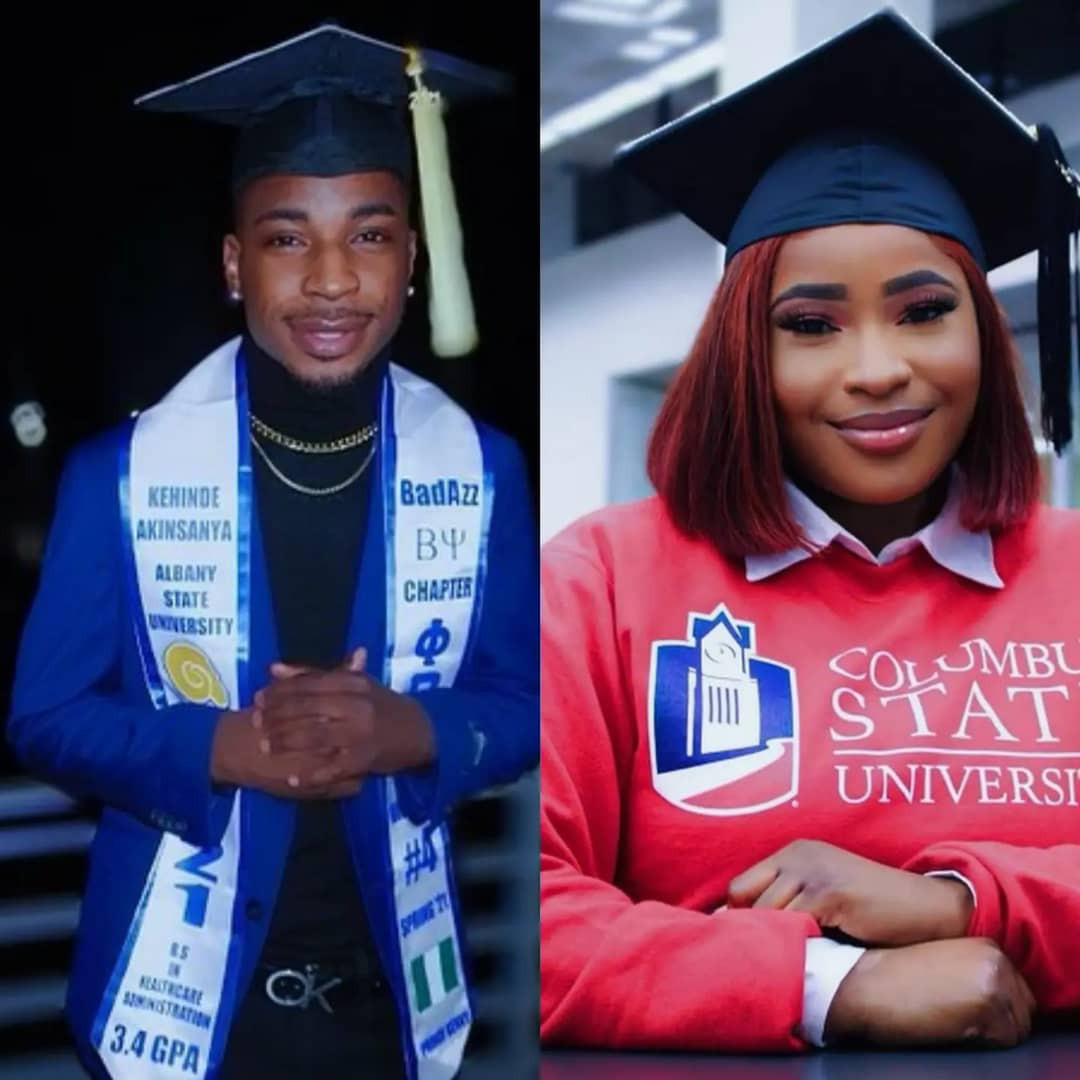

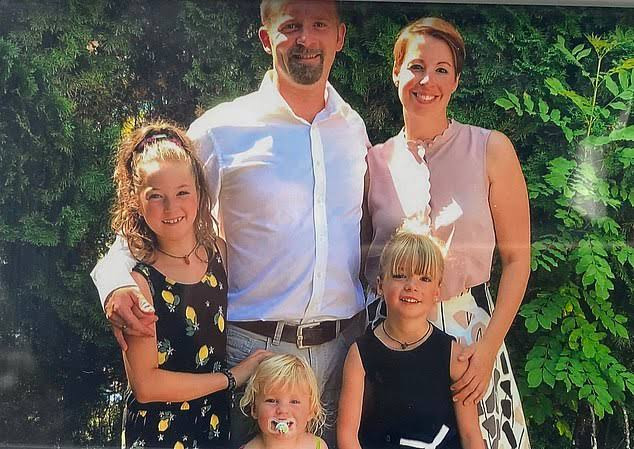

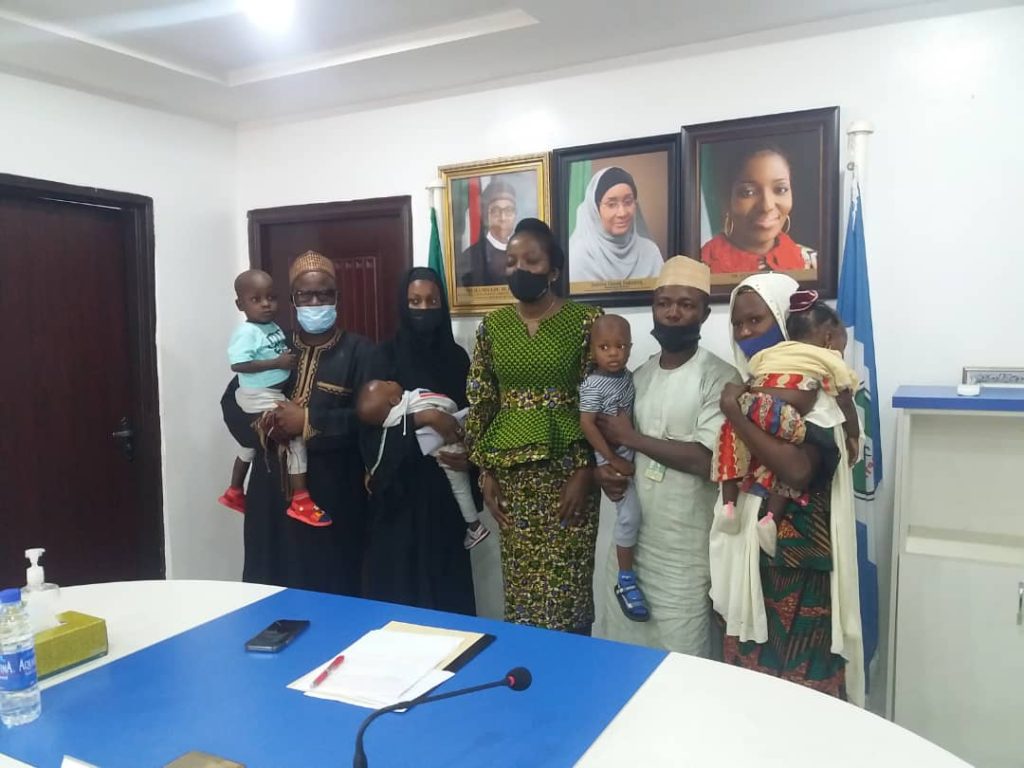

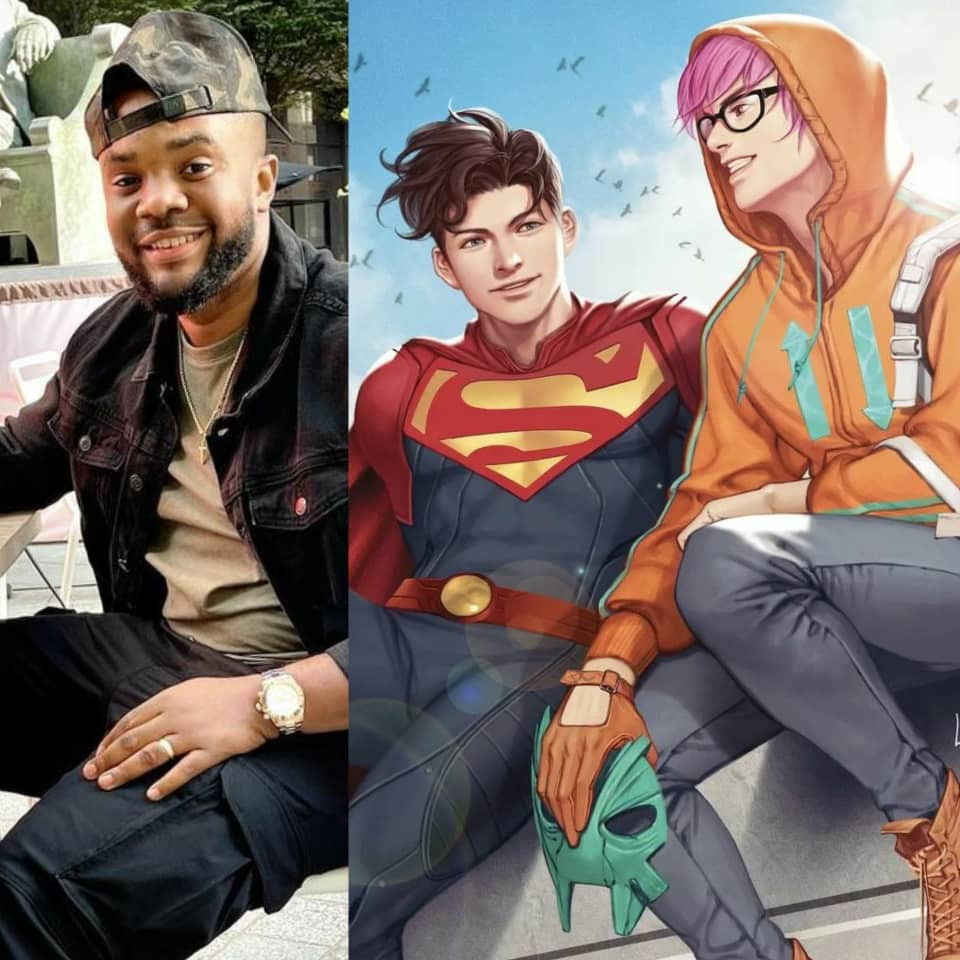

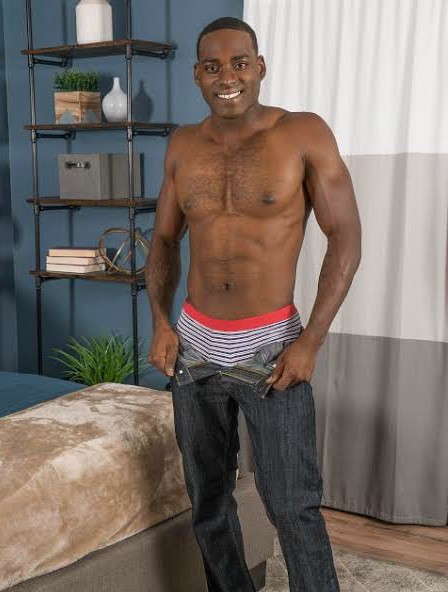


 Football1 day ago
Football1 day ago
 Business1 week ago
Business1 week ago
 Business1 week ago
Business1 week ago
 Education1 week ago
Education1 week ago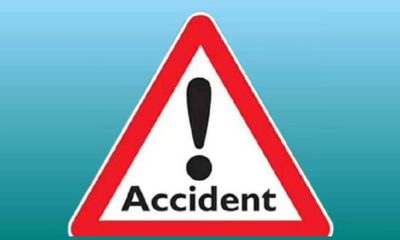
 Crime1 week ago
Crime1 week ago
 Covid-191 week ago
Covid-191 week ago
 Latest5 days ago
Latest5 days ago
 Business1 week ago
Business1 week ago
